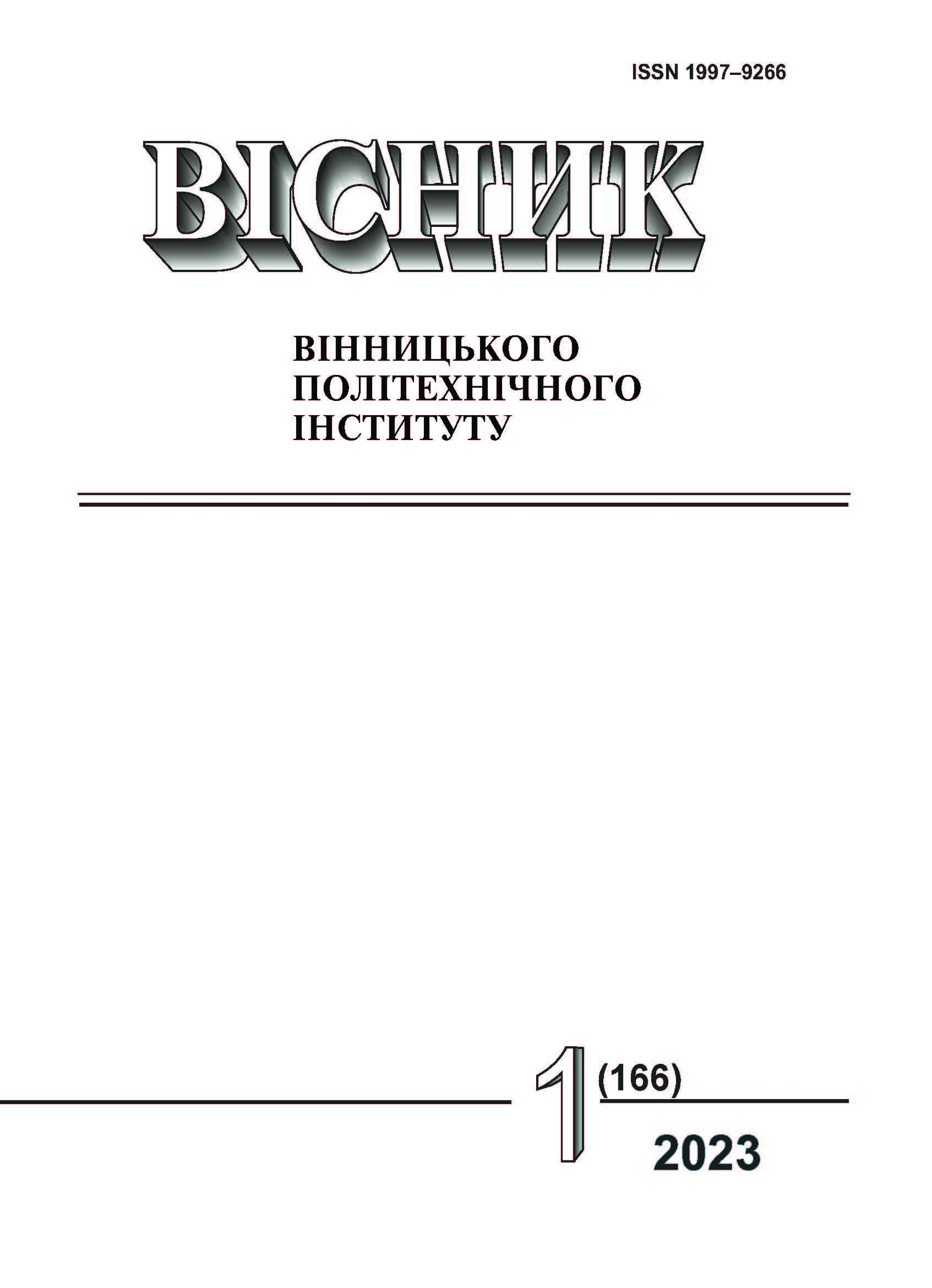Formation of Glutinous Biocomposite Materials Filled with Chopped Stalks of Cereal Crops
DOI:
https://doi.org/10.31649/1997-9266-2023-166-1-65-71Keywords:
heat treatment mode, biopolymer matrix, fraction, moisture, degree of drying, compressive strengthAbstract
The article presents an analysis of the influence of temperature-time parameters of heat treatment on the compressive strength of biocomposite materials, the compositions of which was dried to regulate the moisture content. The samples formed by pressing the prepared composition, based on an aqueous solution of glutin and chopped stalks of cereal crops with a fixed moisture content. Excess moisture content in the composition was reduced by processing in a thermal field at a temperature of 50…60 °C for 20…30 minutes. The main heat treatment was performed for the pressed composition in a press form with fixed fastening of punches to avoid elastic aftereffect. The heat treatment temperature was 150 °C, the exposure time was 2 hours. After 1 hour, the biocomposite material additionally compressed to seal the porous structure formed as a result of water evaporation under the influence of a thermal field. Biocomposite materials with additional heat treatment at a temperature of 50 °C for 4 hours have the highest compressive strength. Under this mode of heat treatment, water molecules slowly evaporate and a rigid framework of the biopolymer matrix with the maximum number of physical and chemical bonds between the components is formed. Increasing the temperature of additional heat treatment to 100 °C and reducing the exposure time to 3 hours reduces the compressive strength of biocomposites due to the deformation of macromolecule chains of the biopolymer matrix and the partial destruction of physicochemical bonds. It is expedient to use the developed biocomposite materials for the manufacture of packaging elements and containers.
References
B. H. Lee, H. J Kim, and W. R. Yu, “Fabrication of Long and Discontinuous Natural Fiber Reinforced Polypropylene Biocomposites and their Mechanical Properties,” Fiber and Polymers, vol. 10, pp. 83-90, 2009.
X. Li, S. Panigrahi, and L. G. Tabil, “A Study on Flax Fiber-Reinforced Polyethylene Biocomposites,” Applied Engineering in Agriculture, vol. 25, pp. 525-531, 2009.
G. S. Mann, L. P. Singh, and P. Kumar, “Green Composites, ” A Review of Processing Technologies and Recent Applications, vol. 33, no. 8, pp. 1017-1171, 2018.
M. R. Sanjay, G. R. Arpitha, L. L. Naik, K. Gopalakrishna, and B. Yogesha, “Experimental Investigation on Mechanical Properties of Hemp/E-Glass Fabric Reinforced Polyester Hybrid Composites,” Journal of Materials and Engineering Structures, vol. 3, no. 3, pp. 117-128, 2016.
A. Pizzi, A. N. Papadopoulos, and F. Policardi, “Wood Composites and Their Polymer Binders,” Polymers (Basel), no. 12 (5), pp. 1115, May, 2020.
О. Л. Садова, В. П. Кашицький, М. Д. Мельничук, О. О. Смолянкін, і С. В. Мисковець, «Дослідження властивостей біокомпозитів, наповнених високодисперним порошком крохмалю,» Наукові нотатки, № 70, с. 35-42, 2020.
A. G. Facca, M. T. Kortschot, and N. Yan, “Predicting the Tensile Strength Of Natural Fiber Reinforced Thermoplastics,” Composites Science and Technology, vol. 67, pp. 2454-2466, 2007.
A. G. Facca, M. T. Kortschot, and N. Yan, “Predicting the Elastic Modulus of Natural Fiber Reinforced Thermoplastics, Composites,” Part A: Applied Science and Manufacturing, vol. 37, pp.1660-1671, 2007.
R. Hu, and J. K. Lim, “Fabrication and Mechanical Properties of Completely Biodegradable Hemp Fiber Reinforced Polylactic Acid Composites,” Journal of Composite Materials, vol. 41, pp. 1655-1669, 2007.
K. M. Bhat, J. Rajagopalan, R. Mallikarjunaiah, N. N. Rao and A. Sharma, Eco-Friendly and Biodegradable Green Composites, 2021.
A. Kaushik, M. Singh, and G. Verma, “Green nanocomposites based on thermoplastic starch and steam exploded cellulose nanofibrils from wheat straw,” Carbohydr. Polym., vol. 82, no. 2, pp. 337-345, 2010.
В. П. Кашицький, О. Л. Садова, О. В. Заболотний, В. М. Малець, і В. С. Мазурок, «Розробка біокомпозитів, наповнених продуктами переробки вторинної сировини рослинного походження,» Вісник Вінницького політехнічного інституту, № 1, c. 95-102, 2022.
О. Л. Садова, і М. І. Вишинський, «Оптимізація технології отримання біокомпозитів, наповнених подрібненими стеблами зернових культур,» Товарознавчий вісник, № 15, ч. 2, c. 72-82, 2022.
В. П. Кашицький та ін., «Оптимізація складу та технології формування біокомпозитів на основі крохмального в’яжучого,» Наукові нотатки, № 71, c. 353-359, 2021.
K. Kaewtathip, V. Tanrattanakul, and Th. Kaewtathip, “Preparation and Characterization of Thermoplastic Starch/Wheat Gluten Composites,” Key Engineering Materials, vol. 531-532, pp. 321-324, 2012.
R. Bodirlau, C. Teaca, and I. Spiridon, “Green Composites Comprising Thermoplastic Corn Starch and Various Cellulose-Based Fillers,” BioRes. vol. 9(1), pp. 39-53, 2014.
Downloads
-
PDF (Українська)
Downloads: 104
Published
How to Cite
Issue
Section
License

This work is licensed under a Creative Commons Attribution 4.0 International License.
Authors who publish with this journal agree to the following terms:
- Authors retain copyright and grant the journal right of first publication.
- Authors are able to enter into separate, additional contractual arrangements for the non-exclusive distribution of the journal's published version of the work (e.g., post it to an institutional repository or publish it in a book), with an acknowledgment of its initial publication in this journal.
- Authors are permitted and encouraged to post their work online (e.g., in institutional repositories or on their website) prior to and during the submission process, as it can lead to productive exchanges, as well as earlier and greater citation of published work (See The Effect of Open Access).





